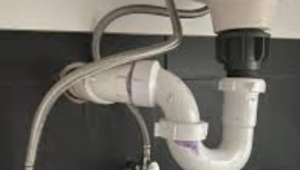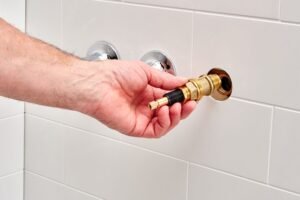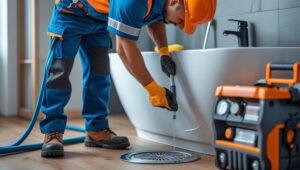What Does MIP Stand for in Plumbing? In plumbing, the term MIP stands for Male Iron Pipe, which refers to a classification of threaded plumbing fittings. MIP fittings have their threads affixed to the exterior of the pipe, allowing the pipe to screw into a female connection or fitting. These fittings are commonly used to join heavy pipes and provide a tight joint in systems that encounter heavy stresses. MIP fittings are typically more durable and are preferred for high-pressure applications.
MIP vs FIP Fittings
MIP fittings are also referred to as male iron pipe fittings. To understand how they differ from other fittings, it’s important to compare them to FIP (Female Iron Pipe) fittings. Both are threaded-piping connections but differ in their thread orientation.
- MIP fittings have external threads, while FIP fittings have internal threads.
- This difference makes them compatible with each other in certain situations, though they serve different purposes in plumbing systems.
MIP fittings are used to attach to female fittings, while FIP fittings are used where the inside of a pipe or fitting requires a screw connection. In simpler terms:
- MIP = external threads
- FIP = internal threads
These fittings are common in both residential and commercial plumbing systems.
What Does MIP Stand for in Plumbing?
Importance of Choosing the Right Fitting
MIP and FIP fittings are critical for making the correct connections, especially in water supply systems. It’s essential to use the correct type of fitting for each connection, as using the wrong one can cause leaks or structural weaknesses. In many cases, a professional plumber can help you select the correct fitting for your specific needs.
Threaded vs. Non-Threaded Pipes: Is There A Difference?
While threaded pipes like MIP and FIP offer strong, secure connections, there are also non-threaded pipes used in plumbing systems. These non-threaded pipes are often found in systems that don’t require a threaded connection for security.
- Threaded pipes, like MIP and FIP, are stronger and more suitable for high-pressure applications. They are ideal for systems such as dishwashers, steam dryers, or washing machines.
- Non-threaded pipes, like those made from PVC, are generally less durable and not compatible with MIP or FIP fittings.
It is crucial to ensure the right materials are used for each specific job to avoid issues with fit or durability.
How FGH and MGH Fittings Work
You may also encounter fittings labeled as FGH (Female Garden Hose) and MGH (Male Garden Hose). These fittings are designed for attaching hoses to devices such as dishwashers, steam dryers, or washing machines.
- When connecting a Male Garden Hose (MGH) to a Female Garden Hose (FGH), an adapter or fitting washer might be needed for a secure connection.
- These fittings are commonly used in outdoor irrigation systems or for connecting water sources to various household appliances.
Additional Plumbing Connectors: FCM and Compression Ends
Another type of plumbing fitting is the FCM connector, which has compression ends. These connectors do not require threads to make a secure seal. Unlike MIP and FIP fittings, which rely on threaded connections, compression fittings create a seal by tightening the compression ends.
Compression fittings are often preferred in situations where corrosion might be a concern or when quick installation is required. These fittings are particularly useful in situations where time is limited or it’s inconvenient to use threaded connections.
The Importance of Choosing the Right Fitting
When installing plumbing systems, it’s important to choose the right fittings for the job. The types of fittings available, such as MIP, FIP, FGH, MGH, and FCM, play a critical role in the success of the installation. Always double-check the required dimensions and materials before starting your project.
FAQs
What is the difference between MIP and FIP?
The key difference is that MIP has external threads, while FIP has internal threads. Both are used in threaded-piping connections, but they are compatible only when the threads are correctly aligned.
Can MIP and FIP be used together?
Yes, MIP and FIP can be used together, as long as the threads match. MIP is typically used with female connections, and FIP is used for male-thread pipes.
Are MIP fittings used for all types of plumbing?
MIP fittings are most commonly used for metal pipes in threaded-piping connections. However, they are not suitable for plastic pipes, like PVC, which have weaker threads and can’t withstand the pressure that MIP or FIP fittings can handle.






